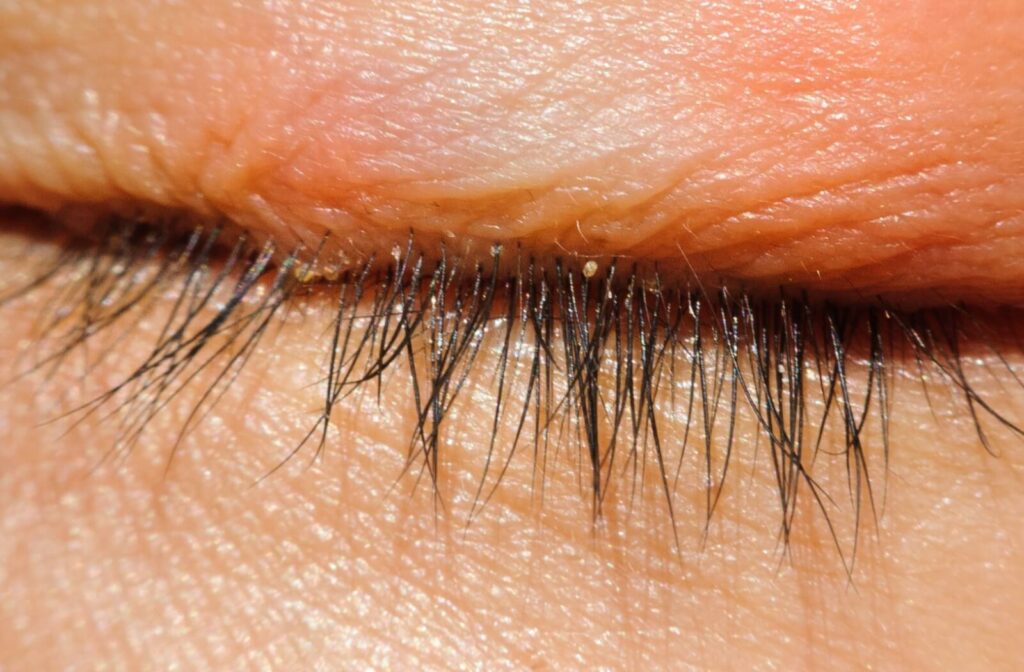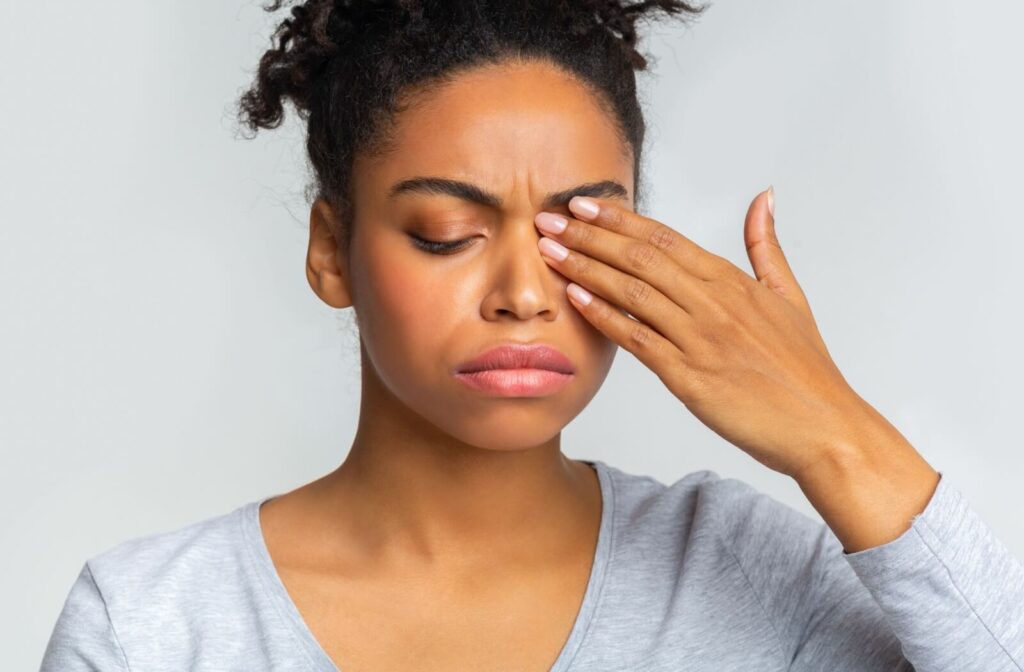Blepharitis can be frustrating, disruptive, and difficult to manage. When you’re dealing with that sudden redness or seeing the flakes on your eyelashes, it may feel like a contagious condition, much like pink eye, but that’s simply not the case. Blepharitis itself is not contagious. However, the bacteria or mites that cause it could transfer across shared items like makeup, towels, or bedsheets.
Whether it’s watery eyes making it hard to see or a persistent dryness that interrupts your day, being aware of this common eyelid condition is key to managing it effectively. Your eye doctor can help you understand what you’re going through with a comprehensive eye exam.
What Is Blepharitis?
Blepharitis refers to chronic inflammation along the edges of your eyelids. When the delicate balance of eyelid health is disrupted, it can lead to redness, irritation, and discomfort. It’s often associated with bacterial overgrowth, blocked oil glands, or underlying skin conditions like rosacea or dandruff.
There are 2 primary types of blepharitis:
- Anterior blepharitis: This type impacts the outer edge of the eyelid, near the base of your eyelashes. Often caused by bacteria or skin conditions like dandruff, anterior blepharitis is primarily visible on the surface of the eyelid.
- Posterior blepharitis: This type affects the inner edge of the eyelid, which directly touches the eye. It’s linked to dysfunctional oil glands, which can block lubrication and lead to inflammation. Skin conditions such as rosacea or seborrheic dermatitis are frequently involved.
While blepharitis doesn’t have a cure, maintaining a consistent care routine can help not only manage symptoms but also keep your eyes feeling healthier.
Can Blepharitis Spread?
Here is where it gets a bit more complex. While blepharitis itself isn’t contagious, some of the factors related to its onset, like bacteria or microscopic mites, can be transferred between people. Close contact or shared items like face towels, makeup, or pillowcases may potentially spread these irritants.
It’s important to note that exposure alone doesn’t guarantee blepharitis. Most people already have the bacteria that can cause blepharitis on their eyelids. The problem is when there is too much of it.
Factors like personal hygiene, immune response, and underlying skin conditions determine whether symptoms will develop. Preventing potential flare-ups starts with good hygiene and taking care to avoid sharing personal items.
For example:
- Wash your hands frequently before touching your eyes.
- Avoid sharing makeup or makeup brushes.
- Use fresh, clean pillowcases and towels regularly.
Your efforts today can significantly lower the likelihood of irritation tomorrow!
Blepharitis Signs & Symptoms to Watch For
Blepharitis can manifest in a variety of ways. If you notice 1 or more of these signs, it may be time to take action:
- Red, swollen, or itchy eyelids
- Burning or stinging sensations in the eyes
- Crusted or flaky buildup at the base of the eyelashes
- Excessive tearing or watery eyes
- A gritty or sandy feeling, as if something is in your eye
In some severe cases, blepharitis could cause eyelashes to fall out or the cornea to swell. Symptoms are often the most disruptive in the morning, due to crust accumulating overnight.
Without treatment, blepharitis may lead to more advanced complications like recurring styes, dry eye, or corneal damage. Early detection is a crucial step in managing this condition effectively.

Steps to Manage Blepharitis
Consistency and care are your best allies when managing blepharitis. Incorporating the right habits into your daily routine can make a world of difference in reducing irritation and keeping your eyelids healthy.
If you’re already dealing with blepharitis, here are some of the best practices for managing its symptoms effectively:
- Daily eyelid hygiene: Start with a clean, warm compress to gently loosen any crust or flakes from your eyelids. Next, use diluted baby shampoo or a specialized eyelid cleanser to carefully clean along the lash line. This helps limit bacteria and unblock oil glands.
- Targeted treatments: For more severe cases, your eye doctor may recommend prescription antibiotics or steroid eye drops. These treatments can address bacterial infections and help reduce inflammation.
- Address underlying conditions: Managing conditions that contribute to blepharitis, like dandruff or rosacea, can significantly improve results.
It’s important to stick to this regimen daily. Over time, your eyes should feel and function better with consistent care.
Tips to Reduce the Risk of Flare-Ups
Blepharitis may not always be preventable, but proactive steps can make a big difference. These tips can help:
- Maintain eyelid hygiene daily to remove debris and bacteria.
- Keep makeup brushes, towels, and pillowcases clean.
- Avoid using expired eye makeup or sharing cosmetics.
- Contact lens wearers should clean and store lenses properly to avoid irritation.
Through these small but meaningful actions, you can reduce the frequency and severity of uncomfortable symptoms, helping your eyelids stay healthy and your eyes feel more comfortable.
Trust Your Eyes to Personalized Care
You deserve practical solutions and personalized care when it comes to your eye health. That’s what you can expect from Bethel Vision Care. We’re passionate about providing treatment plans suited to your unique needs. Whether it’s managing blepharitis or facing any other ocular challenge, we’re here for you.
Don’t let eyelid discomfort hold you back any longer. Book an appointment today and discover how our dedicated team can support the comfort and health of your eyes.



